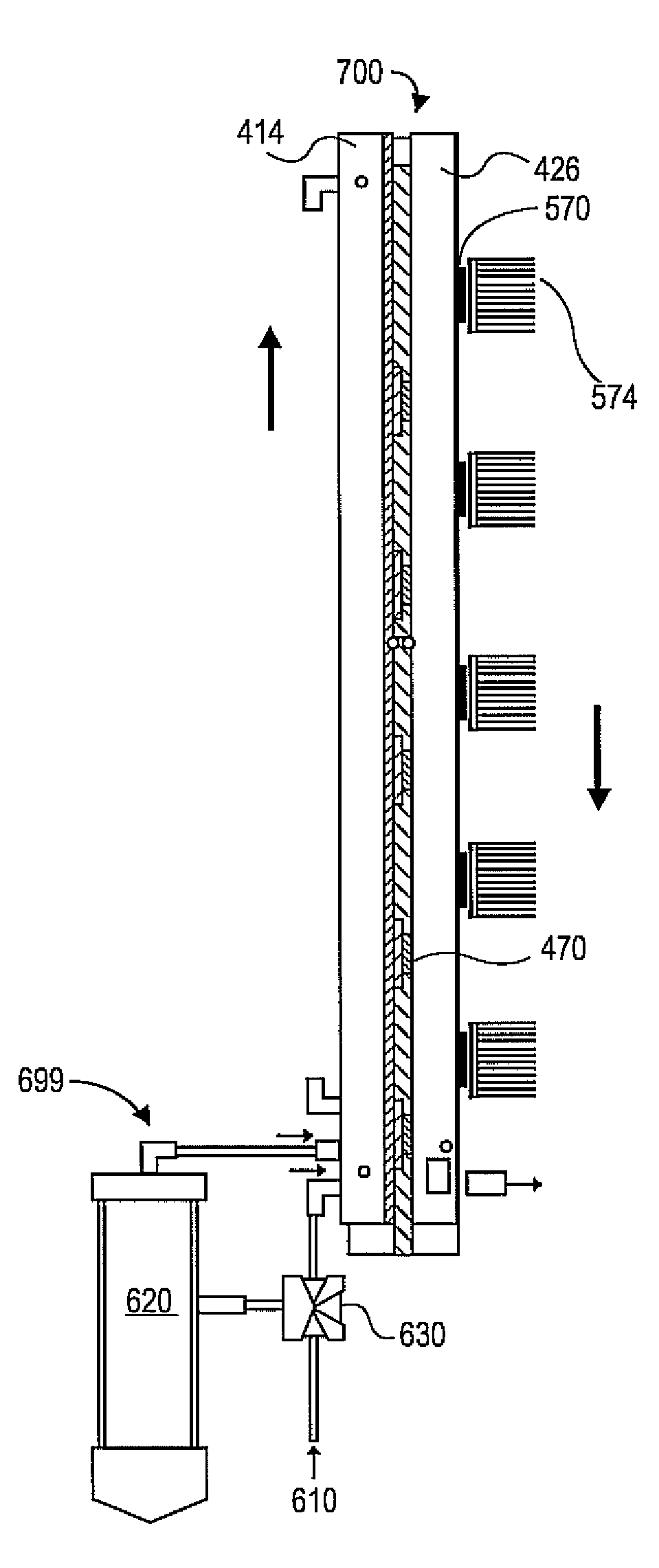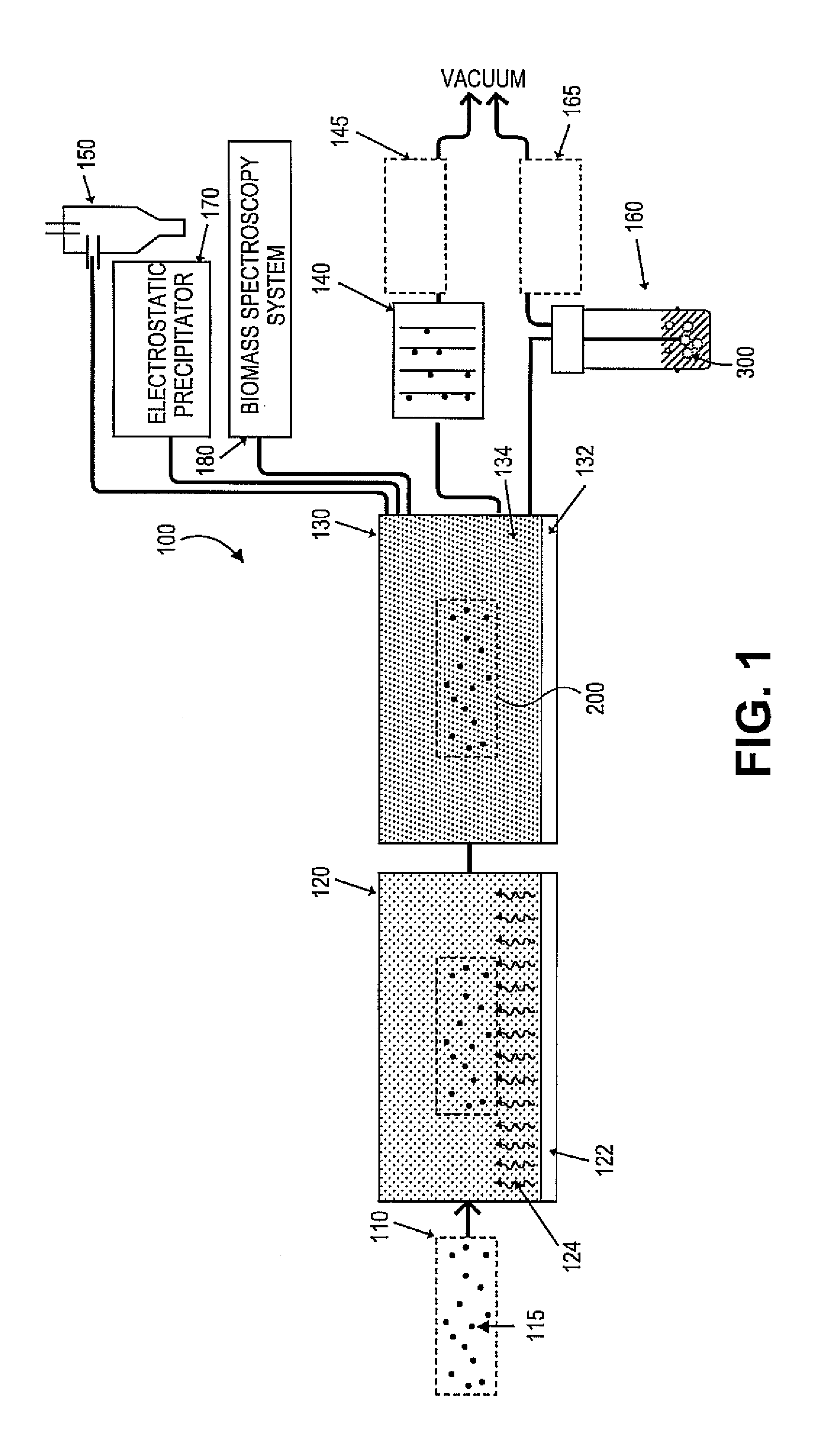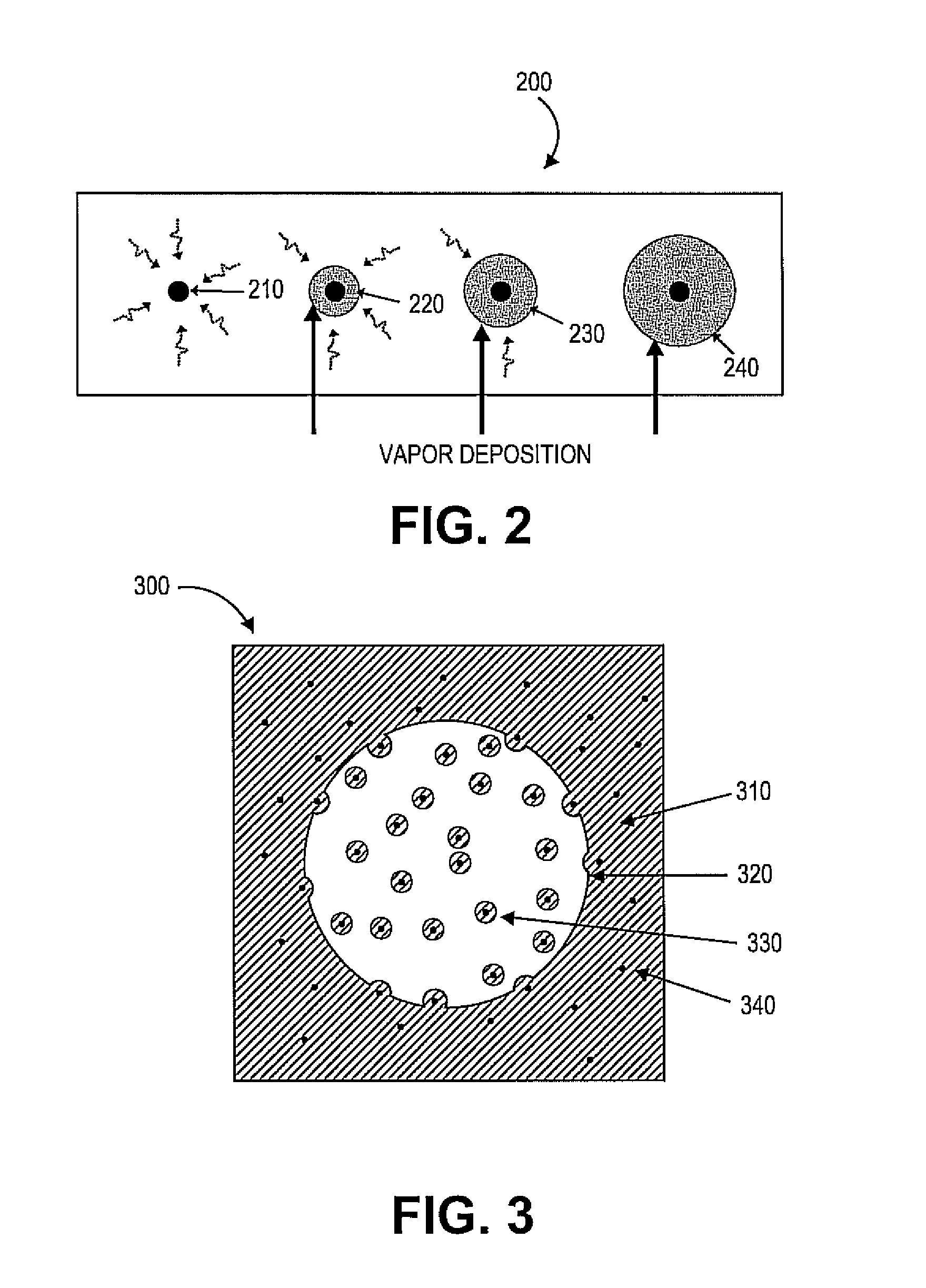High-efficiency viable sampler for ultrafine bioaerosols
a bioaerosol and sampler technology, applied in the field of bioaerosols, can solve the problems of difficult detection, disease, allergies, respiratory problems, and failure to consider the viability of bioaerosols
- Summary
- Abstract
- Description
- Claims
- Application Information
AI Technical Summary
Benefits of technology
Problems solved by technology
Method used
Image
Examples
example
Detection and Sampling of MS2 Type Bacteria
[0069]A bioaerosol generation system was connected to an assembled bioaerosol detection system (e.g., see FIG. 1 and FIGS. 4A-4B) having Six 8 W Peltier junctions for an inline analysis of capture efficiency. MS2 type bacteria phages were chosen as the test sample because of their representative size for the most challenging viral aerosols (28 nm). Baseline tests were performed with the aerosol detection device connected but being turned off in order to obtain an accurate account for the effects of the aerosol size amplification. Humidity at the exit of the heating tube was measured to ensure an ultimate humidity of at least 90% (relative). Four temperatures at the beginning and ends of both the tubes were measured.
[0070]Results from the experiments were collected and are displayed in Table 1. As shown in Experiment I, for the baseline (see set 1 or 5) with the size amplification system turned off, the concentration of MS2 was on average of...
PUM
| Property | Measurement | Unit |
|---|---|---|
| diameter | aaaaa | aaaaa |
| temperature | aaaaa | aaaaa |
| diameter | aaaaa | aaaaa |
Abstract
Description
Claims
Application Information
 Login to View More
Login to View More - R&D
- Intellectual Property
- Life Sciences
- Materials
- Tech Scout
- Unparalleled Data Quality
- Higher Quality Content
- 60% Fewer Hallucinations
Browse by: Latest US Patents, China's latest patents, Technical Efficacy Thesaurus, Application Domain, Technology Topic, Popular Technical Reports.
© 2025 PatSnap. All rights reserved.Legal|Privacy policy|Modern Slavery Act Transparency Statement|Sitemap|About US| Contact US: help@patsnap.com



